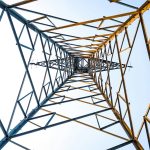nuclear-power-plant-safety-systems
Nuclear Power Plant Safety Systems: 7 Layers Protecting Humanity
Nuclear energy stands as a powerful, low-carbon solution to our global energy needs, yet its complexity demands unwavering vigilance. Recent events highlighting the vulnerability of critical infrastructure, such as the Zaporizhzhia Nuclear Power Plant’s power lines, underscore the absolute necessity of robust Nuclear Power Plant Safety Systems. These systems are not just a regulatory requirement; they are the bedrock of public trust and environmental protection, designed to prevent incidents and mitigate their impact, ensuring the safe operation of these vital facilities.
Understanding Nuclear Power Plant Safety Systems: A Core Imperative
At the heart of nuclear power generation lies an intricate web of engineering and operational protocols designed to contain radioactivity and prevent uncontrolled reactions. This philosophy, known as “defense-in-depth,” employs multiple, independent layers of protection to ensure the safety of the reactor core and prevent any radiological release. Each layer acts as a barrier, making a failure of all systems simultaneously an extremely remote possibility.
The Defense-in-Depth Principle in Reactor Safety
The defense-in-depth strategy begins with the inherent design of the fuel itself and extends outwards through a series of physical barriers and operational procedures. From the ceramic fuel pellets that contain radioactive materials to the robust containment building, every component plays a role in safeguarding against potential hazards. This multi-layered approach ensures that even if one barrier is compromised, subsequent layers are ready to take over, maintaining control and preventing a crisis.
Ensuring Power Grid Stability for Critical Infrastructure Protection
A stable and reliable power supply is absolutely critical for a nuclear power plant, not just for generating electricity but, more importantly, for operating its essential cooling and safety mechanisms. The loss of off-site power, as seen in various scenarios globally, can pose significant challenges. Therefore, ensuring continuous power grid stability and robust backup solutions is a paramount aspect of critical infrastructure protection for nuclear facilities.
Redundant Power Sources and Emergency Protocols
Nuclear power plants are equipped with multiple, redundant power sources to ensure that essential safety systems always have electricity, even in the event of external grid failures. These include connections to various external power lines and powerful on-site emergency diesel generators. In addition, uninterruptible power supplies (UPS) provide momentary power during transitions, allowing time for larger backup systems to activate. Comprehensive emergency protocols dictate precise actions to be taken during any power disruption, prioritizing reactor safety and cooling.
Key aspects of power resilience include:
• Multiple, independent external grid connections to prevent single-point failures.
• On-site emergency diesel generators, tested regularly and capable of starting automatically.
• Robust battery banks and uninterruptible power supplies (UPS) for immediate, short-term power.
• Enhanced physical protection for power lines and transformers against external threats.
Advanced Radiation Control and Emergency Preparedness
Beyond preventing accidents, a crucial aspect of nuclear safety involves stringent radiation control measures and comprehensive emergency preparedness. These systems are designed to monitor, contain, and, if necessary, manage any potential release of radioactive material, ensuring the protection of plant personnel and the surrounding public.
Containment Barriers and Radiological Release Prevention
The physical containment of radioactive materials is achieved through a series of robust barriers. The fuel cladding encases the uranium pellets, forming the first line of defense. The massive reactor vessel then houses the core, providing a second layer. Finally, the formidable containment building, typically a thick concrete and steel structure, acts as the ultimate barrier, designed to withstand extreme pressures and external impacts, preventing any significant radiological release into the environment.
Phases of Emergency Response at Nuclear Facilities:
1. Prompt detection and accurate assessment of any operational anomaly or incident.
2. Rapid activation of on-site emergency response teams and specialized personnel.
3. Transparent and timely communication with local, national, and international authorities.
4. Implementation of pre-planned protective actions, including sheltering or evacuation for the public.
5. Long-term recovery operations and continuous environmental monitoring post-incident.
The Continuous Evolution of Plant Resilience and Oversight
Nuclear power is a continuously evolving field, with lessons learned from every operational experience and incident globally contributing to enhanced safety standards. The resilience of nuclear plants is not static; it is constantly improved through technological advancements, rigorous regulatory oversight, and international cooperation.
Global Standards and Regulatory Oversight in Nuclear Safety
International bodies like the International Atomic Energy Agency (IAEA) establish global safety standards and provide guidance, fostering a culture of continuous improvement. National regulatory authorities, such as the Nuclear Regulatory Commission (NRC) in the United States, enforce these standards through licensing, inspections, and stringent operational reviews. This robust oversight ensures that plants not only meet but often exceed safety requirements, integrating insights from probabilistic risk assessments and severe accident management guidelines to enhance overall plant resilience.
The layers of defense, from fundamental design to comprehensive emergency protocols, underscore the profound commitment to safety in nuclear power. These sophisticated Nuclear Power Plant Safety Systems are the silent guardians, working tirelessly to protect both people and the planet. Reflecting on these robust measures, it’s clear that vigilance remains paramount for our energy future. Stay informed about the ongoing efforts to secure reliable and safe energy sources.
© 2025 thebossmind.com
Discover the multi-layered Nuclear Power Plant Safety Systems crucial for protecting humanity. Explore redundant power, radiation control, and global oversight.







